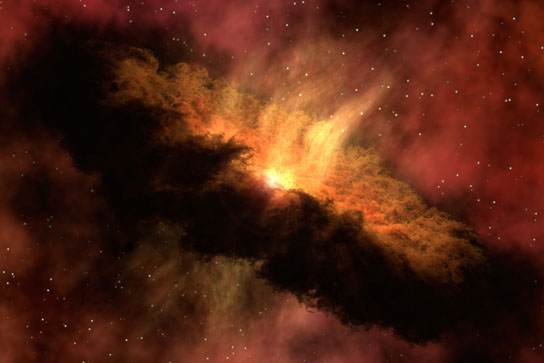White Rabbit
New member

July 6th, 2012
First seen by the NASA Infrared Astronomical Satellite in 1983, the dusty disk around a young sun-like star called TYC 8241 2652 has disappeared, leaving astronomers searching for possible solutions to the mystery.
Imagine if the rings of Saturn suddenly disappeared. Astronomers have witnessed the equivalent around a young sun-like star called TYC 8241 2652. Enormous amounts of dust known to circle the star are unexpectedly nowhere to be found.
“It’s like the classic magician’s trick: now you see it, now you don’t. Only in this case we’re talking about enough dust to fill an inner solar system and it really is gone!” said Carl Melis of the University of California, San Diego, who led the new study appearing in the July 5 issue of the journal Nature.
This artist’s concept shows a young star surrounded by a dusty protoplanetary disk. This disk contains the raw material that can form planets as the star system matures. NASA’s Spitzer Space Telescope observed a fledgling solar system like the one depicted in this artist’s concept, and discovered deep within it enough water vapor to fill the oceans on Earth five times. This water vapor starts out in the form of ice in a cloudy cocoon (not pictured) that surrounds the embryonic star, called NGC 1333-IRAS 4B (buried in center of image). Material from the cocoon, including ice, falls toward the center of the cloud. The ice then smacks down onto a dusty pre-planetary disk circling the stellar embryo (doughnut-shaped cloud) and vaporizes. Eventually, this water might make its way into developing planets. Even in the closest star-forming regions, these disks are tiny and difficult to observe directly, but their strong infrared glow can easily be seen by Spitzer’s detectors. Image credit: NASA/JPL-Caltech
